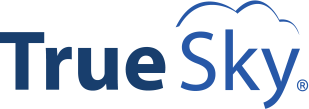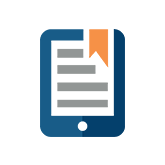The Shift to Predictive Accounting
The following article is from guest blogger, Gary Cokins.
There is a widening gap between what the CFO and accountants report and what internal managers and employee teams want. This does not mean that information produced by the accountants is of little value. In the last few decades, management accountants have made significant strides, such as with activity-based costing (ABC), in improving the utility and accuracy of the costs they calculate and report. The gap is being caused by a shift in managers’ needs from just needing to know what things cost (such as a product cost) and what happened to a need for detailed information about what their future costs and profits will be and why. Examples include driver-based rolling for financial forecasting and true marginal cost analysis for what-if scenarios.
Despite accountants advancing a step to catch up with the increasing needs of managers to make good decisions, the managers have advanced two steps. In order to understand this widening gap, and more importantly how accountants can narrow and ideally close the gap, let’s examine the broad landscape of accounting.
What Is the Purpose of Management Accounting?
Contrary to beliefs that the only purpose of managerial accounting is to collect, transform, and report data, its primary purpose is first and foremost to influence behavior at all levels from the desk of the CEO down to each employee and it should do so by supporting decisions. A secondary purpose is to stimulate investigation and discovery by signaling relevant information (and consequently bringing focus) and by generating questions.
The widening gap between what accountants report and what decision-makers need involves the shift from analyzing descriptive historical information to analyzing predictive information, such as budgets and what-if scenarios. This shift is a response to a more overarching shift in executive management styles from a:
- Command-and-control emphasis that is reactive (such as scrutinizing cost variance analysis of actual versus planned outcomes)
- Anticipatory, proactive style where organizational changes and adjustments, such as staffing levels, can be made before things happen and before minor problems become big ones
This involves predictive analytics.
Financial Reporting Framework and Taxonomy
The domain of accounting has three components: tax accounting, financial accounting, and managerial accounting. There are two types of data sources for all three components:
- Financial transactions and bookkeeping, such as purchases and payroll
- Nonfinancial measures such as payroll hours worked, retail items sold, or gallons of liquid produced
The financial accounting component is intended for external reporting, such as for regulatory agencies, banks, stockholders and the investment community. Financial accounting follows compliance rules aimed at economic valuation, and as such is typically not adequate or sufficient for internal decision- making. And the tax accounting component is in its own world of legislated rules.
Our area of concern the management accounting component can be divided into three categories: cost accounting, cost reporting and analysis, and decision support with cost planning. To oversimplify a distinction between financial and managerial accounting, financial accounting is about valuation, and managerial accounting is about value creation through good decision-making.
The managerial accounting component, our focus here, is composed of three elements. Each is a cost measurement procedure, using the source data inputs, that transforms incurred expenses (or their obligations) into calculated costs:
- Cost Accounting represents the assignment of expenses into outputs, such as the cost of goods sold and the value of inventories. This primarily provides external reporting to comply with regulatory agencies.
- Cost Reporting and Analysis represents the insights, inferences, and analysis of what has already taken place in the business in order to track performance.
- Decision Support with Cost Planning involves decision-making and taking. It also represents using the historical cost reporting information in combination with other economic information, including forecasts and planned changes (e.g., processes, products, services, channels) in order to make the types of decisions that lead to a financially successful future.
The Cost Accounting element is deeply constrained by regulatory practices and describing the past in accordance with principles of financial accounting (e.g., GAAP). The other two elements offer diagnostic support to interpret, and draw inferences from respectively what has already taken place and what can happen in the future. Cost reporting and analysis is about explanation. Decision support with cost planning is about possibilities.
What? So What? Then What?
The value, utility, and usefulness of this information increases at an exponential rate from cost accounting to cost analysis to decision-based costing.
The cost reporting for analysis information converts cost measurement data into a context. It is useful to help managers and employee teams clearly observe outcomes with transparency that may have never been seen before, or is dramatically different from their existing beliefs derived from their firm’s less mature cost allocation methods. Cost reporting displays the reality of what has happened, and provides answers to “What?” That is, what did things cost last period?
However, an obvious follow-up question should be, “So what?” That is, based on any questionable or bothersome observations of historical costs, is there merit to making changes and interventions? How relevant to improving performance is the outcome we are seeing?
But this leads to the more critical and relatively higher value-added need to propose actions to make and take decisions surfaced from cost planning. This is the “Then what?” question. This is what managers want to know. For example, what change can be made or action taken (such as a distributor altering its distribution routes), and what is the ultimate impact? Of course, changes will lead to multiple effects on service levels, quality, and delivery times, but the economic effect of profits and costs should also be considered. And this gets to the heart of the widening gap between accountants and decision-makers who use accounting data. To close the gap, accountants must change their mind-set from managerial accounting to managerial economics what I nickname as “decision-based costing.”
The Need for Managerial Economics
There is a catch. When the Cost Reporting and Analysis element shifts to become Decision Support with Cost Planning, then analysis shifts to the realm of decision support via economic analysis. For example, one needs to understand the impact that changes have on future expenses. Therefore, the focus now shifts to resources and their capacities. This involves classifying the behavior of resource expenses as fixed, semi-fixed, variable, etc., with changes in service offerings, volumes, mix, processes, and the like. This gets tricky. A key concept is this: The “adjustability of capacity” of any individual resource expense depends on both the planning horizon and the ease or difficulty of adjusting the individual resource’s capacity (i.e., its stickability). This wanders into the messy area of marginal cost analysis that textbooks oversimplify, but is complicated to accurately calculate in the real world.
In the predictive view of costs, changes in demand such as the volume and mix of products and services ordered from customers will drive the consumption of processes (and the work activities that belong to them). In turn, this will determine what level of both fixed and variable resource expenses are needed to supply capacity for future use.
Since decisions only affect the future, the predictive view is the basis for analysis and evaluation. This view is what managers are increasingly seeking, and accountants are lagging at providing. The predictive view applies techniques like what-if analysis and simulations. The projections are based on forecasts and consumption rates ideally derived as calibrated rates from the historical, descriptive view where the rate of operational work typically remains constant until productivity and process improvements affect them.
Closing the Accounting Gap
Key tests for deciding the capability of a managerial accounting system should be:
- How does it handle economic projections?
- Can it accommodate classifying resource expenses as variable, semi-variable, fixed, or as unavoidable or avoidable (i.e., allowing for capacity adjustment decisions)?
- Does it isolate unused/idle capacity expenses?
Cost accounting system data is not the same thing as cost information that should be used for decision-making. The majority of value from cost information for decision-making is not in historical reports the descriptive view. Its primary value is in planning:
- The future (such as product and customer rationalization)
- Marginal cost analysis for one-off decisions
- Trade-off analysis between two or more alternatives.
This requires the predictive view. There is a gap between what managers want and what accountants provide. Closing the gap should be a high priority for every CFO.
ABOUT THE AUTHOR
Gary Cokins, CPIM
Gary Cokins (Cornell University BS IE/OR, 1971; Northwestern University Kellogg MBA 1974) is an internationally recognized expert, speaker, and author in enterprise and corporate performance management (EPM/CPM) systems. He is the founder of Analytics-Based Performance Management LLC www.garycokins.com . He began his career in industry with a Fortune 100 company in CFO and operations roles. Then 15 years in consulting with Deloitte, KPMG, and EDS. From 1997 until 2013 Gary was a Principal Consultant with SAS, a business analytics software vendor. His most recent books are Performance Management: Integrating Strategy Execution, Methodologies, Risk, and Analytics and Predictive Business Analytics.
As managerial accounting is becoming more important to forward thinking organizations, the role of the CFO is changing. CFOs and other c-level finance executives are becoming more accountable, not only to stakeholders and the public, but to the organization itself. Understandably, it’s a daunting task for anyone who’s never done this before or very little, and there are tools that can help. True Sky is a sophisticated budgeting tool that is embedded into Excel to help organizations streamline and manage the budgeting, planning and forecasting process.
Learn more about a Planning, Budgeting & Forecasting solution.




